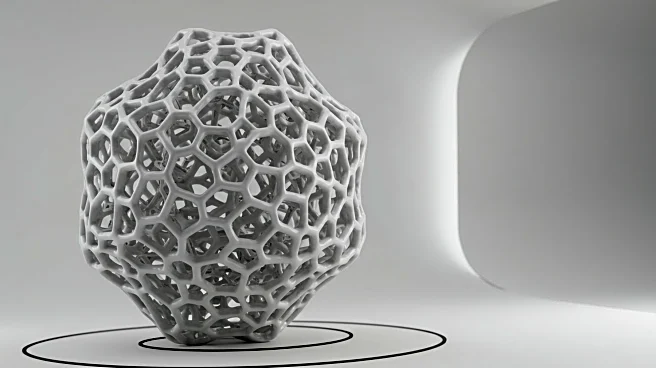Rapid Read • 8 min read
A recent study has examined the heat transfer characteristics of 3D printed sheet and solid triply periodic minimal surfaces (TPMS) porous structures. The research compared the heat exchange capacities of various TPMS configurations, including Primitive, Gyroid, and Diamond structures, against traditional fins. The study found that the solid Gyroid structure exhibited superior heat transfer efficiency, particularly at high air velocities, due to its compact design that reduces flow resistance. The findings suggest that TPMS structures, especially the Gyroid, offer significant advantages in terms of hydrodynamic drag and flow rate, making them effective for applications requiring efficient thermal energy exchange.
AD
The study's findings have implications for industries focused on improving heat transfer efficiency, such as electronics cooling and energy systems. The enhanced performance of TPMS structures, particularly the Gyroid, could lead to more efficient cooling solutions, reducing energy consumption and improving device longevity. This research highlights the potential for 3D printed structures to revolutionize heat exchanger design, offering a path towards more sustainable and cost-effective thermal management solutions.
Future research may focus on optimizing the manufacturability of sheet-type Gyroid structures, which were excluded from experiments due to high pressure drop and structural fragility. Additionally, studies could explore the application of TPMS structures in higher-power scenarios, assessing their performance in electronics cooling and other industrial applications. The continued development of these structures could lead to broader adoption in various sectors, enhancing thermal management capabilities.
The study also touches on the experimental challenges faced, such as non-ideal conditions and measurement errors, which could affect the accuracy of results. Addressing these issues in future research could improve the reliability of findings and further validate the benefits of TPMS structures. The exploration of dimensionless flow parameters like Reynolds and Nusselt numbers provides a deeper understanding of the fluid dynamics involved, offering insights into optimizing these structures for specific applications.
AD
More Stories You Might Enjoy










